Facelift
In addition to the natural aging process, the effects of sun exposure, smoking, genetics, stress, and other factors can cause the skin and tissues of the face to weaken and stretch. This can lead to visible signs of aging in facial areas and the accumulation of fat pockets, especially under the chin. A facelift, also known as a rhytidectomy, is a procedure designed to reduce or eliminate facial wrinkles, sagging skin, and excess fat in the lower two-thirds of the face and the upper neck area.
Our Rogers plastic surgeons, Dr. Robert Taylor and Dr. Kasia Kania, perform advanced facelift techniques with natural-looking results to improve these aesthetic concerns for a refreshed and rejuvenated appearance. Notably, Dr. Taylor completed a craniofacial surgical fellowship at the International Craniofacial Institute in Dallas, TX, granting him an enhanced understanding of the structures of the face and skull. He currently serves as the Director of the Cleft and Craniofacial Center of NWA, where he helps patients with complex head and neck abnormalities—including traumatic injuries and birth defects—enhance their self-confidence and improve their quality of life. Our entire team is dedicated to helping patients achieve their goals in a safe and affirming environment, and we encourage you to contact us today with any questions you may have.
Facelift Quick Facts
- Procedure: Approximately 3 to 4 hours
- Sedation: General or local anesthesia
- Recovery: About 2 to 4 weeks
- Principle benefits: A more youthful appearance with tauter skin & less wrinkles
- Surgeon’s experience: Over 25 years











